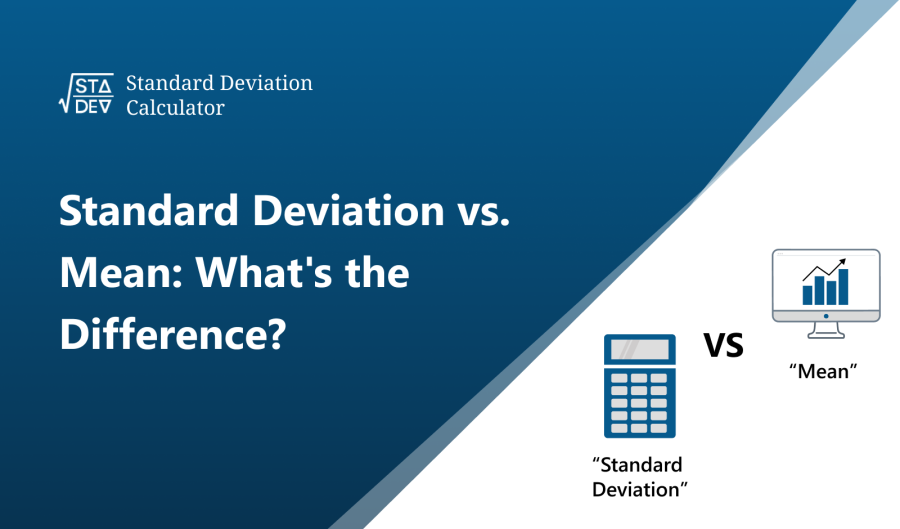Standard Deviation vs. Mean: What's the Difference?

Navigating the world of statistics, two keywords often emerge standard deviation and mean. Although these two measures are essential for statistical analysis, they serve different purposes and provide unique insights into a dataset.
This blog will deep-dive into the differences between these two critical concepts, guiding you through their significance and applications in real-world scenarios.
What is the Mean?
The mean, frequently referred to as the average, is one of the simplest and most commonly used measures of central tendency in statistics. The mean of a dataset is obtained by adding up all the numbers in the dataset and then dividing the sum by the total number of values in the set.
One of the easiest ways to calculate the mean is by using a mean calculator. This efficient tool automatically computes the mean of any dataset, saving you time and minimizing potential calculation errors.
Example:
Let's assume we have a dataset: 2, 4, 6, 8, 10. To find the mean:
- Sum up all the numbers: 2 + 4 + 6 + 8 + 10 = 30
- Divide by the total number of values: 30 ÷ 5 = 6
So, the mean of this dataset is 6.
What is Standard Deviation?
Standard deviation, on the other hand, is a measure of dispersion or variability within a dataset. It gives us an idea of how spread out the numbers in a data set are from their mean. A small standard deviation indicates that the data points are close to the mean, while a large standard deviation suggests that the data points are spread out over a wider range.
Just like with the mean, there's a handy tool for calculating standard deviation—the standard deviation calculator. This calculator will help you assess the degree of variability in your data with just a few clicks.
Example:
Consider the same dataset: 2, 4, 6, 8, 10. To find the standard deviation:
- Calculate the mean (which we already know is 6).
- Subtract the mean from each number and square the result: (2 - 6) ², (4 - 6) ², (6 – 6) ², (8 - 6) ², (10 - 6) ², giving 16, 4, 0, 4, 16.
- Find the mean of these squared differences: (16 + 4 + 0 + 4 + 16) ÷ 5 = 8
- Take the square root of this result: √8 ≈ 2.83
So, the standard deviation of this dataset is approximately 2.83.
Standard Deviation vs. Mean: The Key Differences
While both the mean and standard deviation are derived from the same dataset, they provide different insights. The mean gives a central value that represents the data as a whole, while the standard deviation illustrates how spread out or dispersed the data is around this mean.
Therefore, the key difference lies in the type of information they offer:
- Mean: Provides the average or central value of a dataset.
- Standard Deviation: Measures the dispersion or variability around the mean.
Both values are integral to data interpretation, with the mean often used alongside the standard deviation to gain a more comprehensive understanding of a dataset.
Conclusion:
In conclusion, both the mean and the standard deviation are crucial in statistical analysis. The mean provides an average value, indicating where most values likely center, while the standard deviation measures how spread out these values are.
Remember, the process of calculating these metrics can be simplified by using online tools like the mean calculator and standard deviation calculator.
Understanding these concepts will enable you to make better data-informed decisions, whether you're conducting academic research, market analysis, or even evaluating performance metrics.
Remember, the difference between an ordinary statistic and an insightful one lies in how well you understand and interpret these fundamental concepts!


